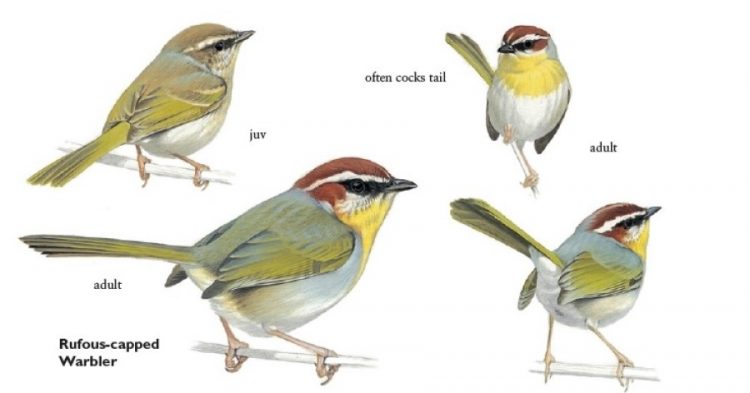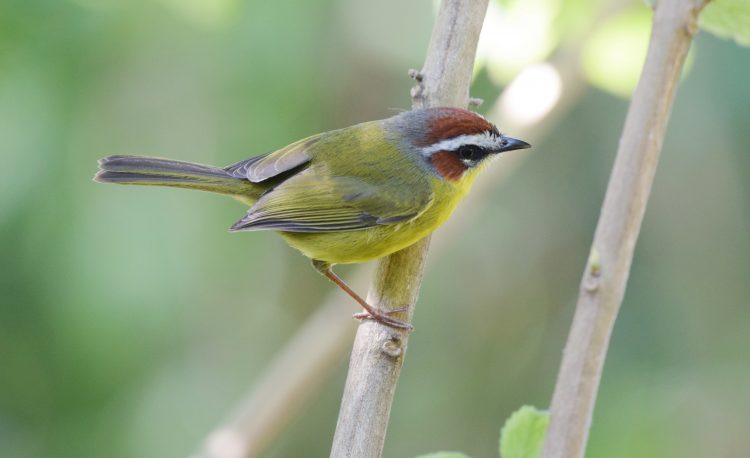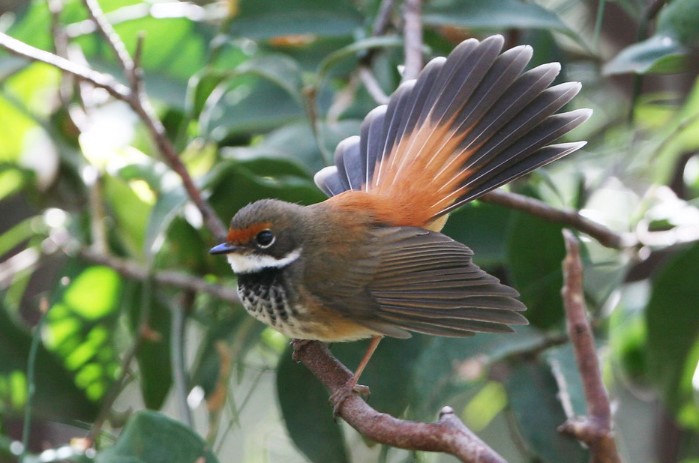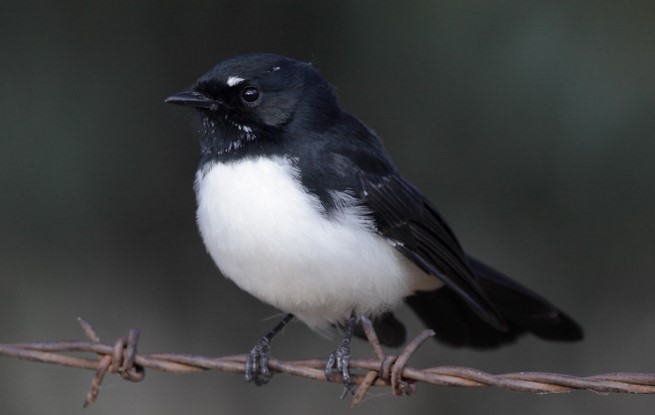Habitat and Behavior
Rufous-capped Warbler (Basileuterus rufifrons) likes to stay in brushy scrub, semi-open areas with scattered bushes and weedy patches, woodland edge with brushy and weedy growth; in fairly dry areas as well, as along watered canyons. The bird forages mainly at low to mid-levels. Sometimes on the ground, clambering and gleaning on weed stalks and other foliage, occasionally sallying.

Song / Sound / Call
Rufous-capped warbler can be somewhat retiring and easily overlooked if not calling, but also curious, often responding to pishing by chipping loudly and perching up with tail cocked, crown slightly raised. Rufous-capped warbler common call a sharp chipping chikk or tik tik, often run into exciting chippering series; also a quieter high tsi or tik. Songs are varied, rapid, but often accelerating series of chips and trills, the overall effect sometimes suggesting a goldfinch or siskin.
As per Wikipedia – “Male birds have complex songs with several syllable types shared both within and between males’ repertoires. The male Rufous-capped warbler also shows seasonal, temporal and annual variation in their song use”.

Identification:
The rufous-capped warbler (Basileuterus rufifrons) is a New World warbler endemic from Mexico central to south America. But rarely occurring as far north as southeastern Arizona and south Texas. Rufous-capped warbler is a perky, very attractive warbler with a striking head pattern, long cocked tail.
Similar Species:
Nothing in North America. Note bold white eyebrow, rufous cap, bright yellow bib, long cocked tail, and excited chipping calls. The birds normally reach a length of about 12.7 cm. Rufous-capped warbler courtship song is a fast, hastening series of chipping notes (chitt-chitt-chitt-chittchittchitt).
Age/Sex/Season:
Rufous-capped warbler ages are different, but sexes are similar; no seasonal variation. Molts are not well known; they are likely to have complex basic strategies. In the first year: Juvenile (lax plumage held briefly) is brownish overall, becoming buff on the belly, with light pale cinnamon wing bars, and traces of adult head pattern. Following partial preformative molt, look like an adult but averages duller; flight feathers are juvenile, which in spring/summer are more strongly worn and tend to be duller and browner overall; rectrices average more tapered.

In both Arizona and Texas, the first records were in the mid-1970s, with only 3 records in the 1980s (from Texas), followed by a marked upsurge in the 1990s that continued into the 2000s, particularly in AZ. This species is basically resident and appears to remain paired year-round in much of Mexico.
It is not known to be a seasonal migrant in the n. of its range unlike Crescent-chested Warbler and Fan-tailed Warbler. Given its life-history traits, combined with the pattern of US records, we suspect that most Rufous-capped warblers arrive in fall and winter. However, some find suitable habitat and may remain to breed, staying for years at a site until the immigration event peters out. Read More – Crested Kingfisher







